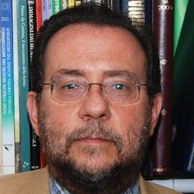Correlative Microscopy: Workflows and Applications in Materials Science
A special issue of Applied Sciences (ISSN 2076-3417). This special issue belongs to the section "Materials Science and Engineering".
Deadline for manuscript submissions: 30 September 2024 | Viewed by 61

Special Issue Editors
Interests: electron microscopy; nanomaterials; cultural heritage; nanotechnology
Special Issues, Collections and Topics in MDPI journals
Interests: electron microscopy; electron diffraction; nanocharacterization; nanotechnology; carbon nanomaterials
Special Issues, Collections and Topics in MDPI journals
Interests: nanocharacterization; scanning probe microscopy; nanotechnology; nanoscience; atomic force microscopy
Special Issues, Collections and Topics in MDPI journals
Special Issue Information
Dear Colleagues,
Almost 40 years have passed since the first paper was published by M. Osborn, R.E. Webster and K. Weber describing the possibility of combining light and electron microscopy to observe the same region of interest. Later, this particular approach to microscopy became known as correlative microscopy, and the combination of these two techniques is called CLEM—Correlative Light to Electron Microscopy. For a long time, this technique was strictly limited to the life sciences, but the need for specific and different information from a particular region of interest has extended this approach to materials science, including other characterization techniques such as RAMAN, AFM or XRM. However, what is really important for the development of a functional and fast correlative technique is not only the application but also the so-called workflow, that is, all the steps needed to combine the analysis for different instruments, from the construction of specific sample holders up to the data analysis.
We are pleased to invite you to contribute to this Special Issue which aims to explore all aspects relating to the implementation of a correlative microscopy technique in materials science, from its application to the creation of an innovative workflow.
In this Special Issue, original research articles and reviews are welcome. Research areas may include (but are not limited to) the following:
- Application of different combinations of correlative microscopy in material science.
- Development of innovative workflows for fast and accurate correlative microscopy.
- Methods of data analysis for correlative microscopy, including the employment of AI systems.
We look forward to receiving your contributions.
You may choose our Joint Special Issue in Journal of Experimental and Theoretical Analyses.
Dr. Francesco Mura
Prof. Dr. Marco Rossi
Dr. Daniele Passeri
Guest Editors
Manuscript Submission Information
Manuscripts should be submitted online at www.mdpi.com by registering and logging in to this website. Once you are registered, click here to go to the submission form. Manuscripts can be submitted until the deadline. All submissions that pass pre-check are peer-reviewed. Accepted papers will be published continuously in the journal (as soon as accepted) and will be listed together on the special issue website. Research articles, review articles as well as short communications are invited. For planned papers, a title and short abstract (about 100 words) can be sent to the Editorial Office for announcement on this website.
Submitted manuscripts should not have been published previously, nor be under consideration for publication elsewhere (except conference proceedings papers). All manuscripts are thoroughly refereed through a single-blind peer-review process. A guide for authors and other relevant information for submission of manuscripts is available on the Instructions for Authors page. Applied Sciences is an international peer-reviewed open access semimonthly journal published by MDPI.
Please visit the Instructions for Authors page before submitting a manuscript. The Article Processing Charge (APC) for publication in this open access journal is 2400 CHF (Swiss Francs). Submitted papers should be well formatted and use good English. Authors may use MDPI's English editing service prior to publication or during author revisions.
Keywords
- correlative microscopy
- CLEM
- CPEM
- data analysis







